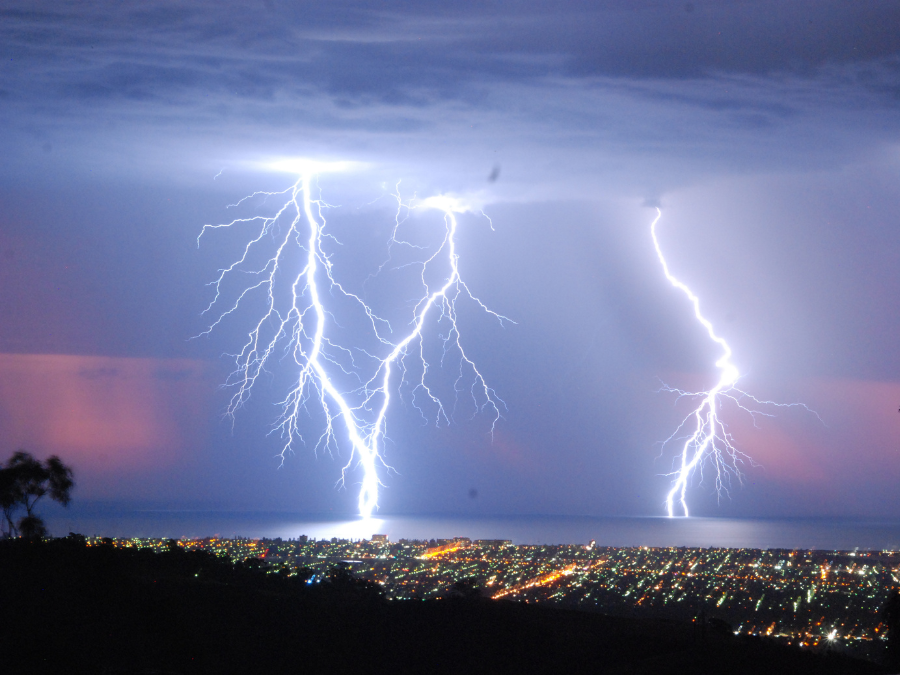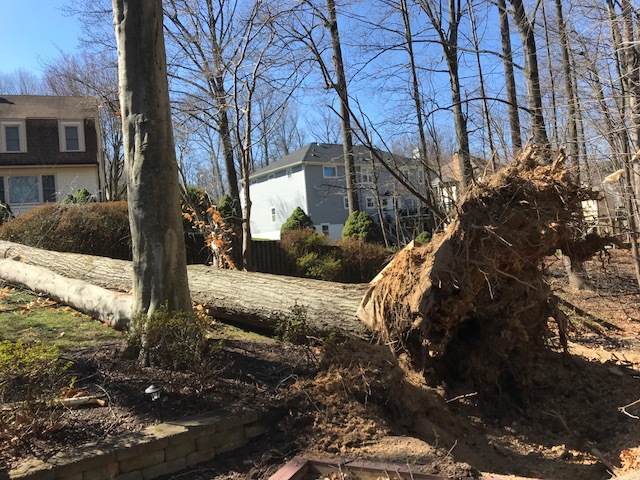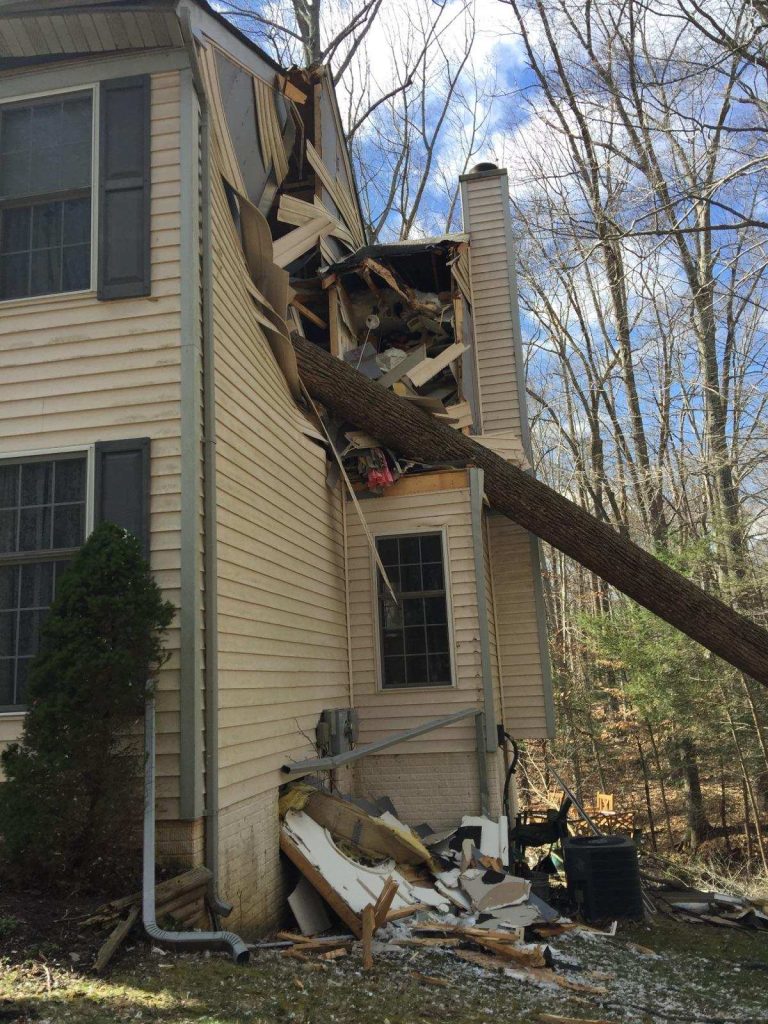Summer storms can be a beautiful sight to behold, but they can quickly turn from entertainment to tragedy. Severe storms with high winds, heavy rain, and lightning can cause significant damage to trees, compromising their health and stability. We understand how scary these storms can be when mature trees surround your home. In over 25 years of service, we’ve helped hundreds of homeowners recover from the aftershock of storm damage. As a homeowner with precious trees on your property, it’s important to take preventative measures to protect them from summer storms.
In this blog post, we will explore the biggest threats to your trees during summer storms and share some tips on keeping them safe.
The Biggest Threats to Your Trees from Summer Storms
Summer storms can cause all sorts of damage to trees, but there are two primary threats that you should be aware of – high winds and groundwater saturation. These natural phenomena can significantly impact the health and safety of your trees. When in an area where heavy rainfall is typical, water-soaked soil can lead to weak roots and uprooted trees. High winds can physically break or lift branches until they split, making them structurally unstable.
High Winds
Strong winds are detrimental to mature and young trees, especially those with weak root systems or poor branch structures. When the wind blows, it can snap branches, uproot trees, or cause them to fall. Even small branches can be propelled by strong winds causing great damage to anything in their path. Winds can also strip trees of their foliage and damage the bark, providing an entry point for insect infestations. It’s essential to assess your trees’ structural integrity and identify any weak points that could be vulnerable in high-wind situations before it’s too late.
Groundwater Saturation
Heavy rain can saturate the soil around the roots of your trees, making it difficult for them to get the oxygen and nutrients they need. This can weaken the tree’s roots, making it more susceptible to falling over in high-wind situations. Moreover, waterlogged soil can also attract pests and diseases that threaten the tree’s health. Trees planted in locations with poor drainage systems are most vulnerable, even during mild storms.
Are you worried about lightning?

Many homeowners are worried that lightning could strike a tree near their home, causing significant damage. Trees are some of the highest objects outdoors and their wood fibers work as natural lightning rods. Much like our inability to predict where lightning will strike, we can’t exactly predict how it will affect your trees either. This means that sometimes a tree can survive after being struck (it may end up with a wicked burn mark), but sometimes it can severely damage a tree. Some tree species are more susceptible to being hit than others, this includes oaks, poplars, ash, and pine trees.
Why Root Health is So Important to Preventing Summer Storm Damage
Root systems are incredibly crucial to the overall health and safety of your trees. When roots are healthy and robust, they can anchor the tree firmly in the ground, absorb water and nutrients from the soil, and provide stability in high wind situations. However, if your trees’ root systems are weak or compromised, they run the risk of falling over or snapping easily during severe weather.
Some Trees are More Vulnerable to Strong Winds and Groundwater Saturation
Some trees are at higher risk of storm damage than others. Trees with shallow roots like cherry and silver maple are more likely to fall in high-wind situations. Trees with a heavy canopy such as oak, elm, and beech are more susceptible to wind damage too. On the other hand, trees like the bald cypress and willow are more tolerant of moisture and can grow in and around wet areas without being damaged.

How to Protect Your Trees from Summer Storms
There are several things homeowners can do to protect their trees from summer storms. Here’s what you need to know:
Preventative Pruning
Pruning your trees can help minimize storm damage. Proper pruning techniques can improve the structural integrity of your trees and prevent them from breaking in high winds. Removing dead or damaged branches, thinning out the canopy, and removing crossing branches can help reduce storm risks. Reach out to us to get your trees pruned before the storms roll in!
Mulching
Mulching is another effective way to protect your trees from storm damage. Mulch helps to regulate soil moisture levels and temperature. It can also prevent soil erosion, suppress weed growth, and add nutrients to the soil. This all helps improve the health of your trees and makes them more resistant to storm damage.
As always, make sure to avoid mulch volcanoes!
Bio-Stimulants and Root Health
Bio-stimulants are like a multivitamin for your trees; they stimulate microbial activity, increase nutrient uptake, and improve soil structure. Healthy soil means healthy roots, which means healthy trees. By improving your trees’ root health, you can help them withstand damage from summer storms and other environmental stressors.
Protect Your Property from Falling Limbs
One of the most important reasons to protect your trees from summer storms is to avoid property damage caused by falling limbs. Having a large limb or tree fall onto your house is a terrifying experience. As emergency storm responders, we have seen the devastating effects that storms can have on properties.

Here are some tips to help you minimize the risk of harm:
- Move your car out of the way of trees during storms.
- Examine trees for problematic positioning near houses, power lines, or other structures.
- Look for signs of splitting branches, cracks, or other indicators of weakened wood, and address them appropriately.
While you can’t exactly move your tree to a more ideal location, you can follow the preventative measures we discussed to minimize the risk of causing damage to your trees and your property.
Talk to an RTEC Expert to Protect Your Trees Today!
The best way to protect your trees from summer storms is to get expert help from accredited arborists and tree care professionals. We can assess your trees’ health and recommend strategies to prevent storm damage. By being proactive in this way, you can protect your investment in your home and keep your family safe.
Talk to an RTEC tree expert to help prepare your property for the upcoming storm season. Treating your trees with care year-round will benefit their health regardless of the season.



